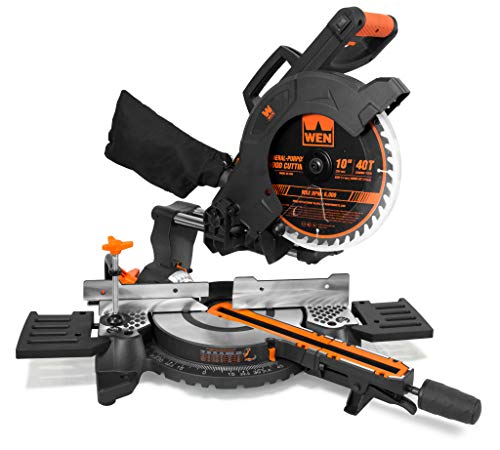Beautiful Plants For Your Interior
Beautiful Plants For Your Interior
A detent override on a miter saw is a feature that allows you to make precise angled cuts at any angle you want, rather than just the preset detents on the saw. It usually works by disengaging the saw’s preset locking mechanism, which lets you manually adjust the angle of the blade to your desired measurement. Ultimately, the detent override is a useful feature for creating accurate cuts, especially when dealing with complex angles.

Are you looking for a miter saw with all the right features to enable you to make precision cuts for your woodworking and DIY projects? If yes, then you should consider purchasing a miter saw with a detent override. A detent override is a mechanism that allows you to bypass the preset angles on a miter saw and select an angle that is not on the preset detents. This feature can help you achieve greater accuracy and customization in your cuts.
In this article, we will discuss what a detent override is, how it works, and how it can help you with your projects. We will also look at some examples of how to use a detent override, as well as some tips on how to maintain your miter saw.
A detent override is a feature found on many miter saws that allows you to fine-tune your miter angle to a degree that is not preset by the manufacturer. This override is usually located near the detent plate and consists of a lever or button that you can press to release the saw from the preset angle and adjust the angle manually. This feature enables you to make minor adjustments to the angle of your cuts, ensuring better accuracy and precision.
When you adjust the detent override on your miter saw, you are essentially telling the saw to ignore the preset angles on the detent plate and allow you to set the angle of the saw blade manually. This feature can be useful when you need to make precise cuts that are not available on the preset angles.
Detent override typically uses a locking mechanism to hold the saw blade securely in place once you have set your desired angle. This locking mechanism helps to ensure that your angle does not slip while you are cutting, thereby guaranteeing accurate cuts.
Detent override can help you achieve greater accuracy and customization in your cuts. This feature can be especially useful when cutting crown molding, as it allows you to make adjustments to the angle of the saw blade to match the precise angle of the crown molding.
Detent override can also be used when cutting tiles. While it is not recommended to use miter saws to cut tiles, sometimes it becomes necessary. If you are using a miter saw for tile cutting, you might need to adjust the angle to achieve precise cuts. However, you need to use a diamond blade and ensure proper water management when cutting tiles.
Suppose you need to make a precise angled cut that is not available on the detent plate of your miter saw. In that case, you can use the detent override to achieve your desired angle. For example, suppose you need to cut a piece of wood at 34 degrees instead of the 30 degrees that are available on the detent plate. In that case, you can use the detent override to set the angle to 34 degrees and make the cut accurately.
Another example of how to use detent override is when you are cutting a piece of crown molding with a compound miter saw. Crown moldings require precise angled cuts, and sometimes the desired angle is not preset on the detent plate. In such cases, you can use the detent override to set the blade angle exactly as required.
To keep your miter saw in good condition and functioning correctly, you should observe some maintenance practices. Here are some tips on how to maintain your miter saw:
In conclusion, a detent override is a useful feature that can help you achieve greater accuracy and customization in your cuts. By allowing you to bypass the preset angles on your miter saw’s detent plate, you can achieve and make precise angled cuts that are not available on the detent plate. You can use detent override when working on crown moldings or other woodworking and DIY projects that require precise angled cuts. Always ensure that you use your miter saw safely, and follow the manufacturer’s instructions for maintenance and cleaning.
Can a Miter Saw Be Used to Cut Tile?
Can a Miter Saw Be Used to Cut Crown Molding?
How do I Maintain the Blade on a Miter Saw?